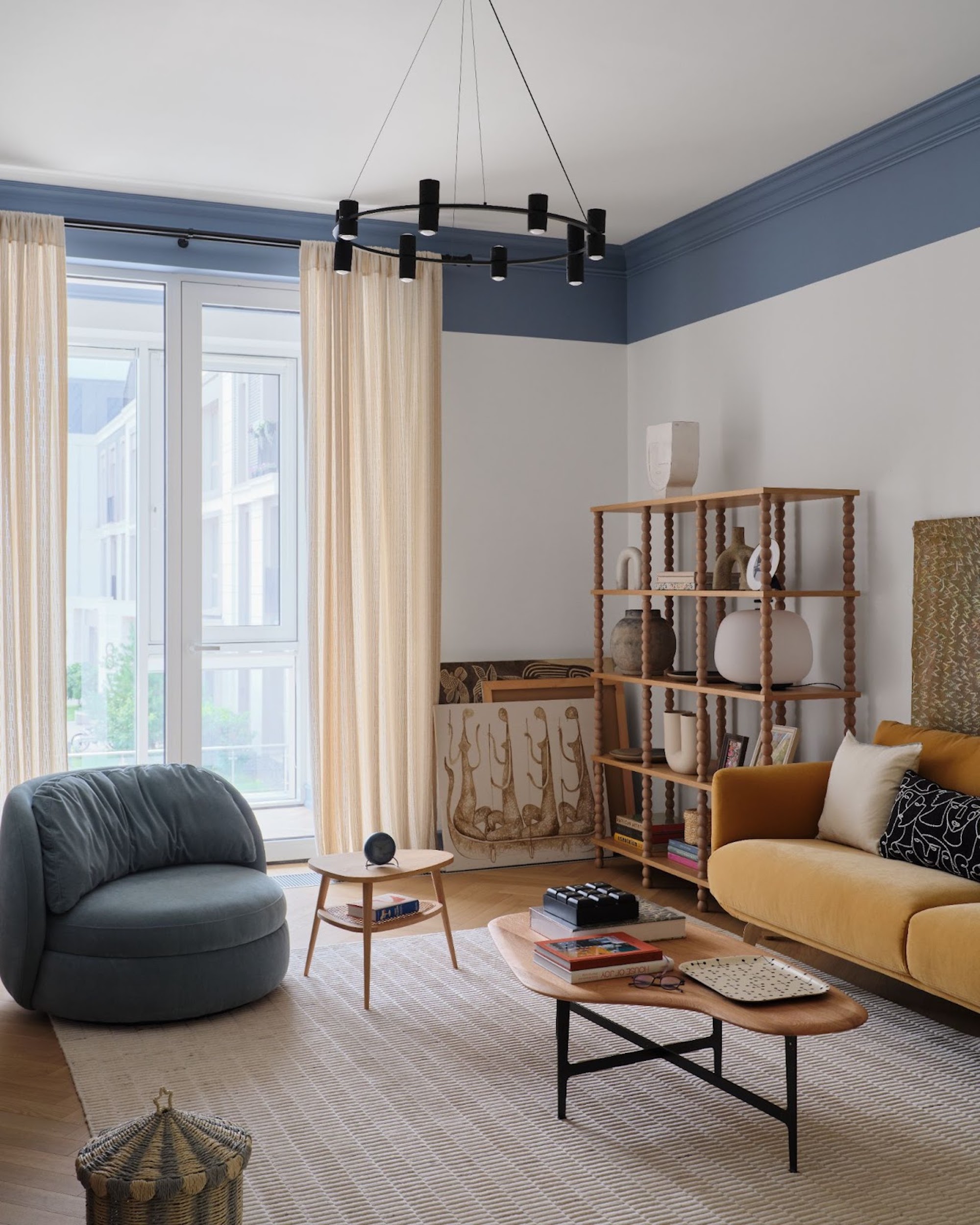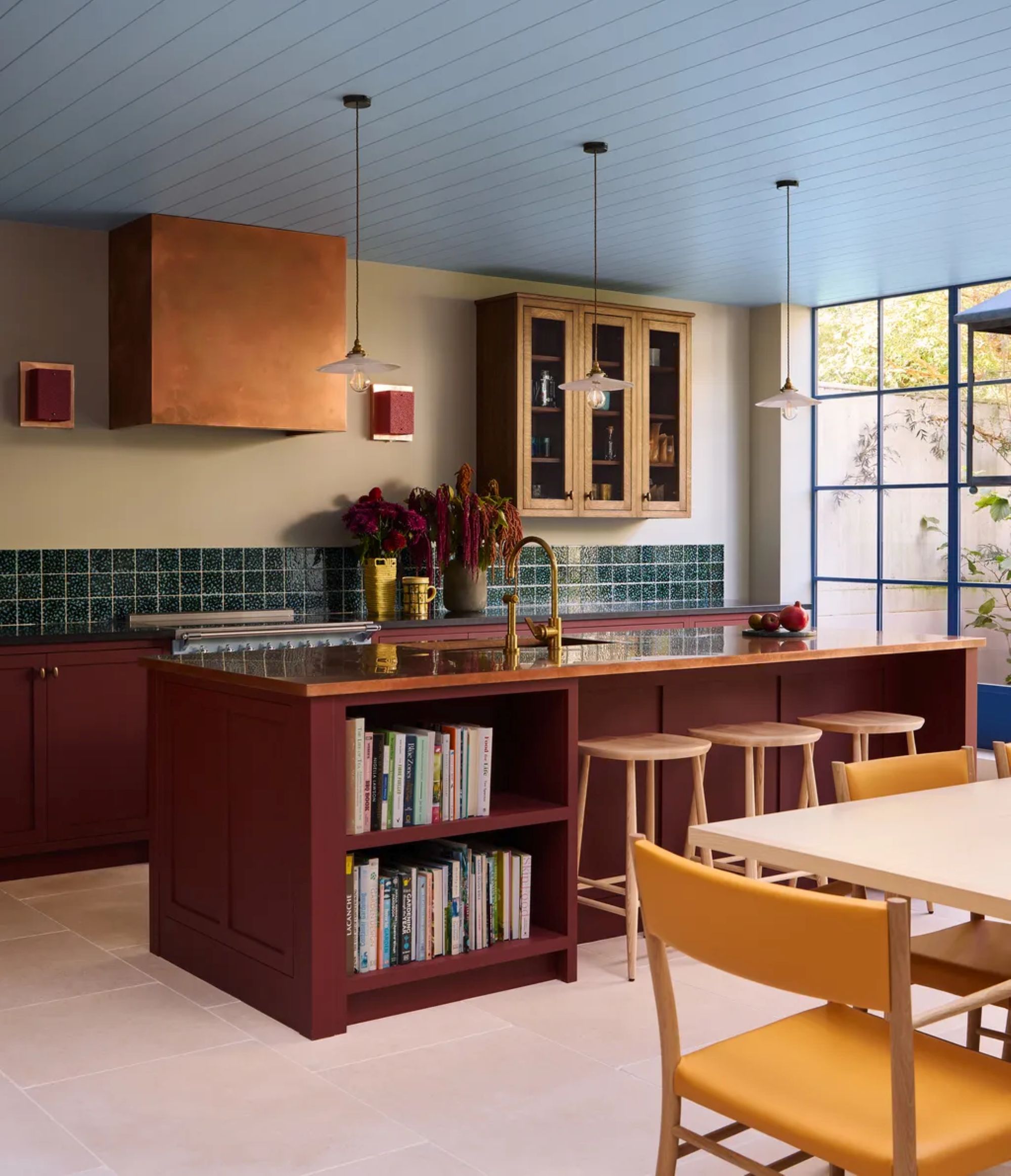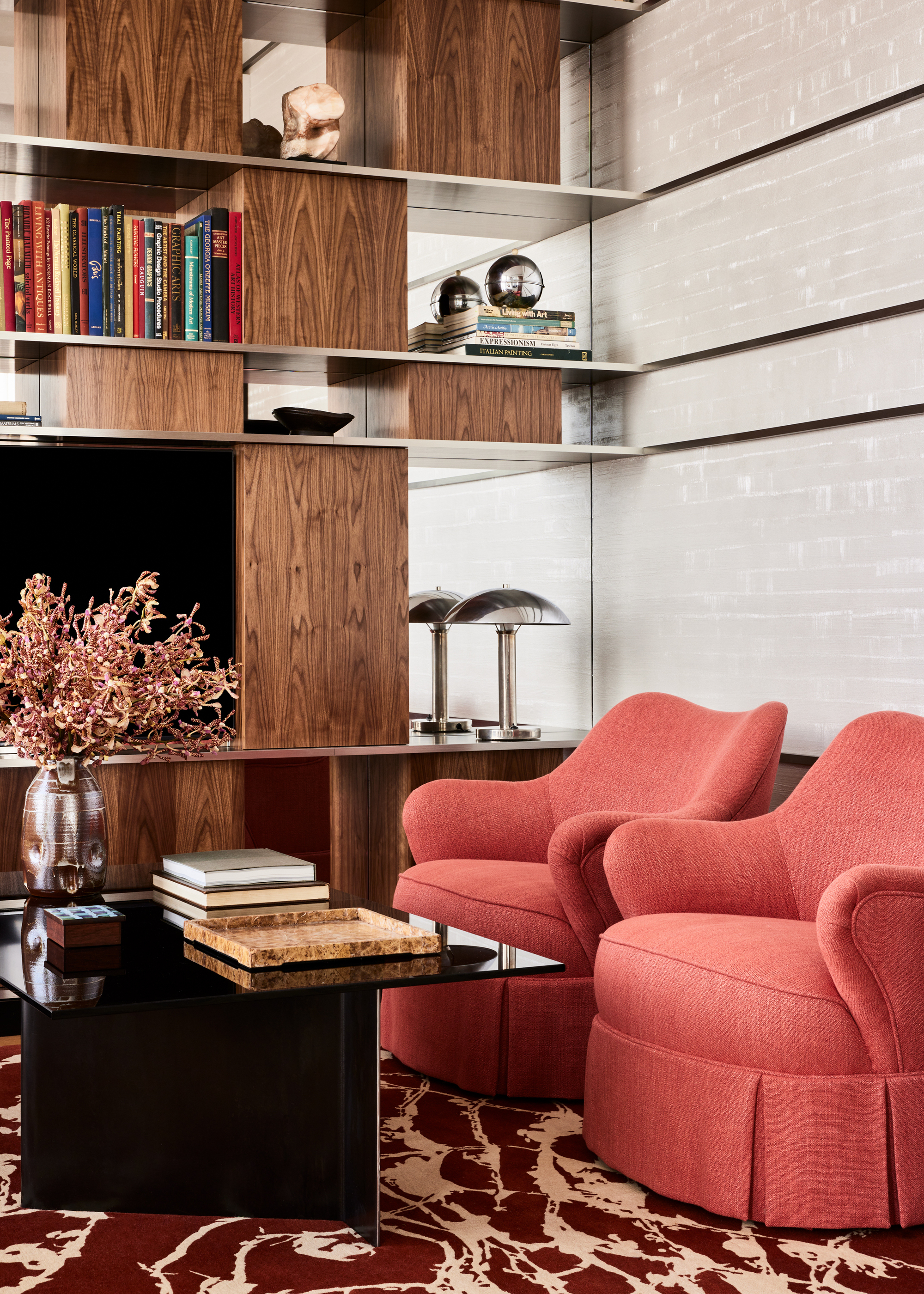How to Avoid the 'Boyfriend Corner' and Make Your Styles Mesh as a Couple, According to Married Interior Designers
Having to accommodate a man cave is not the answer to a harmoniously designed home. Here, designers share how to make competing styles feel cohesive


My best friend just moved into an apartment with her boyfriend of six years. Everything was going good, until they came across a major issue: they have completely different tastes when it comes to decorating.
My friend keeps up with all the latest interior design trends, and has her own distinct sense of personal style. It's apparent throughout their apartment, until you come across the 'boyfriend corner'. Here, you'll find an old desk decorated with vintage glass figurines, a poster of his favorite football team, and a strange floor lamp I won't do the disservice of trying to describe.
Now, they're certainly not the first couple to encounter this problem after moving in together. Being able to seamlessly mix interior design styles is a skill. But want to know who can do it well? Interior designers. Particularly, interior designers who live together. Below, I asked Brittney Hart and Justin Capuco, the duo behind Husband Wife Studio, and the iconic Bob and Cortney Novogratz, for their help.
Tip 1: Find Common Ground

An easy way to find common ground is through color, especially one inspired by a place you've been together.
The best place to start when mixing interior design styles is by finding some common ground. Sometimes, though, that's easier said than done.
Brittney Hart and Justin Capuco, partners in life and work (they share New York design studio, Husband Wife) encourage their clients to start by individually finding images that speak to their own sense of style.
"We then construct the larger plot of the project by finding the aesthetic overlap between the two perspectives," they tell me. "Once you have that loose framework, it helps inform everything else."
Another way to find common ground is to reflect on your relationship, says designers Bob and Cortney Novogratz. They like to encourage clients to think back to the best design hotel they've stayed at, or a restaurant they went to and both enjoyed — and to use that as their inspiration, pulling colors, furnishings, and design elements they both liked.
The Livingetc newsletters are your inside source for what’s shaping interiors now - and what’s next. Discover trend forecasts, smart style ideas, and curated shopping inspiration that brings design to life. Subscribe today and stay ahead of the curve.

Brittney Hart and Justin Capuco founded Husband Wife, a New York-based design studio, in 2015. Their work focuses on highly-crafted residential, commercial, and retail projects. Together, Brittney and Justin prioritize sophisticated comfort in their projects, but they are not afraid to create moments of tension through interplay of scale and form. Some of their clients include Anna Sheffield, Roll & Hill, and Moda Operandi.
Tip 2: Contrast Is Key

In a shared space, work with your partner to tastefully mix interior design styles — include vintage pieces that you love as well as elevated souvenirs from trips together.
Once you start selecting furnishings and other decorations for your space, don't be afraid of your differences, but rather lean into the contrast between you and your partner's design styles. "Contrast in design is where the magic happens," says Bob and Cortney.
And Brittney and Justin agree — "A sense of duality throughout a home is a beautiful thing," they say. "That juxtaposition is what we're always after in our work."
Think about it this way: the differences in your personalities is likely what keeps your relationship interesting, so the same can go for your interior choices. Don't try to hide one side, but rather find ways to let each shine evenly (and that means not confining their 'style' to one cramped corner of the home).
Instead, as you decorate, strive for a balanced mix of both styles. "We always bring in bold color, vintage pieces, and personal art to help both people feel represented," Bob and Cortney explain. "Design should reflect the life you’re building together."

Cortney and Bob Novogratz have been working together for over 25 years to redefine modern interiors and create spaces that are bold, livable, and personal. The design duo are parents of seven children, so they're keen on creating spaces that are equally functional and beautiful.
Tip 3: Be Open to Compromise

Rooms that get significant use, like the kitchen or living room, should be designed by both you and your partner. Be open to compromise in these spaces.
I don't claim to be an expert, but I do know that relationships are all about love, respect, and a lot of compromise. So the same should go when designing your space.
While compromising the aesthetics of your space might make you squirm, it can actually be advantageous to the final result, says Brittney and Justin. "With something as subjective and emotional as design, no two people will ever mirror each other's exact opinions, and in the long run that's always a good thing," they say. "Do your best to reframe compromise as a strength, not a sacrifice."
Another way to go about mixing interior design styles is by breaking up different areas of the home depending on who uses the space more. For example, if one person spends more time in the home office, let them dictate the design of it. For larger shared space, such as a living room or kitchen, it's all about compromise — unless someone has a really clear vision for it, then often it's best to let them take the lead, the designers agree.

Blending decor that represents your style as well as the style of your partner can make for cohesive and personal design.
So, as my best friend starts the long process of styling her apartment, I've encouraged her to do it with her boyfriend, rather than just banishing his belongings to one corner. (Although, I think the posters and questionable choice of lighting call for a deeper conversation...)
Remember, blending your different tastes and mixing interior design styles is what helps make a house feel, not just like a home, but your home. It honors the life you're building together, so you should really do it together.
But that's when it comes to styling. Building and DIY-ing is a completely different conversation, and there are some home renovation projects you should never do by yourself — let alone with your partner. Consider yourself officially warned.

Devin is a New York-based style editor for Livingetc who is keen on all aspects of personal style. From a young age, she was drawn to the design world, and she loves sharing design choices with her readers, from explaining how to incorporate trends into interior spaces to sourcing the best products for your home. Devin believes style should be inclusive, exciting, and at its core, fun.


